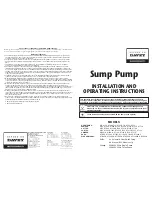
1-8
peak currents (as occur in pulse loading) may exceed the
preset current limit and cause crossover to occur and
degrade performance.
REVERSE CURRENT LOADING
An active load connected to the supply may actually deliver a
reverse current to the supply during a portion of its operating
cycle. An external source can not be allowed to pump current
into the supply without risking loss of regulation and possible
damage to the output capacitor of the supply. To avoid these
effects, it is necessary to preload the supply with a dummy
load resistor so that the supply delivers current through the
entire operating cycle of the load devices.
Figure 3. Reverse Current Loading Solution
OUTPUT CAPACITANCE
An internal capacitor across the output terminals of the supply
helps to supply high-current pulses of short duration during
constant-voltage operation. Any capacitance added exter-
nally will improve the pulse current capability, but will
decrease the load protection provided by the current limiting
circuit. A high-current pulse may damage load components
before the average output current is large enough to cause
the current limiting circuit to operate.
REVERSE VOLTAGE PROTECTION
A diode is connected across the output terminals with reverse
polarity. This diode protects the output electrolytic capacitors
and the series regulator transistors from the effects of a
reverse voltage applied across the output terminals. Since
series regulator transistors can not withstand reverse voltage
either, diodes are also connected across them. When operat-
ing supplies in parallel, these diodes protect an unenergized
supply that is in parallel with an energized supply.
Summary of Contents for E3620A
Page 9: ......





























